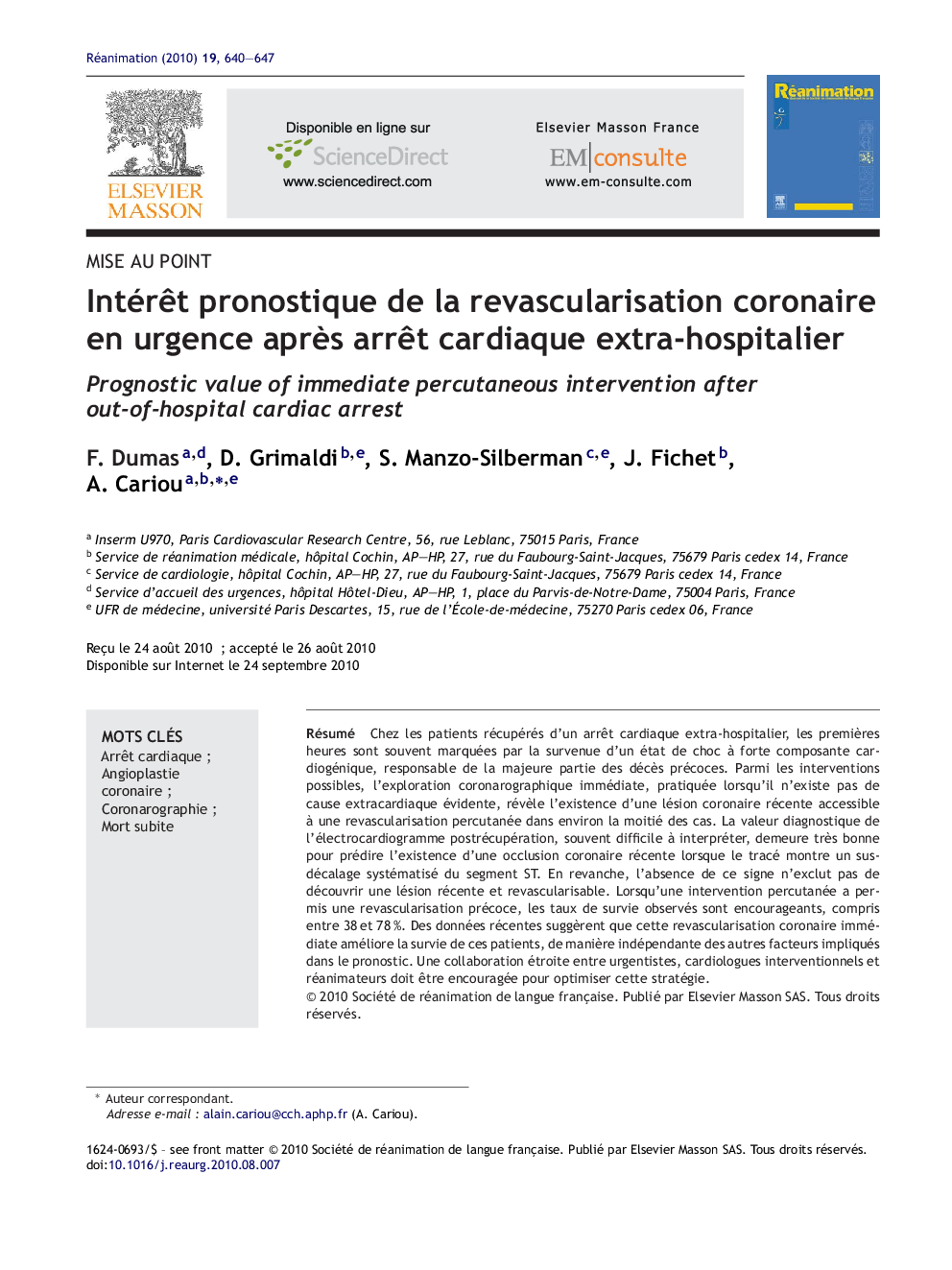| Article ID | Journal | Published Year | Pages | File Type |
|---|---|---|---|---|
| 2613077 | Réanimation | 2010 | 8 Pages |
Abstract
In patients resuscitated from an out-of-hospital cardiac arrest, the first hours are often marked by the occurrence of a circulatory failure with strong cardiogenic participation, responsible for most of the early deaths. Among possible interventions, urgent coronary angiography, performed in the absence of obvious extracardiac cause, reveals the existence of a recent lesion accessible to a percutaneous coronary intervention (PCI) in about half of cases. Even if difficult to interpret, the diagnostic value of the postrecovery electrocardiogram remains very good in its ability to predict a recent coronary occlusion in the presence of a ST segment elevation. On the other hand, the absence of a ST segment elevation does not firmly exclude a recent coronary occlusion. When early PCI allowed a successful revascularisation, the reported survival rates are encouraging, being comprised between 38Â and 78Â %. Recent data suggests that an immediate PCI improves the survival rate of these patients, independently of other usual prognostic factors. A narrow collaboration between prehospital teams, cardiologists and intensivists must be encouraged to optimize this strategy.
Keywords
Related Topics
Health Sciences
Medicine and Dentistry
Emergency Medicine
Authors
F. Dumas, D. Grimaldi, S. Manzo-Silberman, J. Fichet, A. Cariou,
